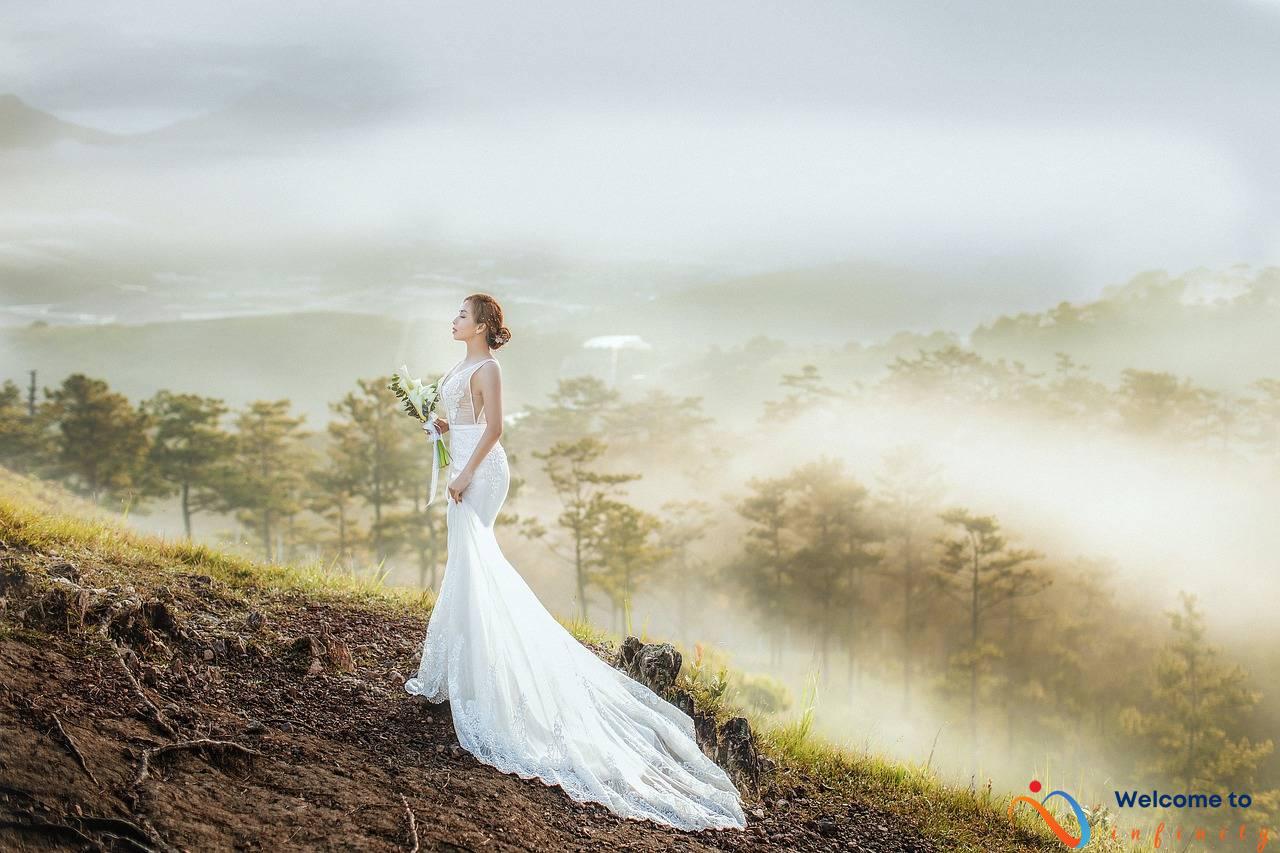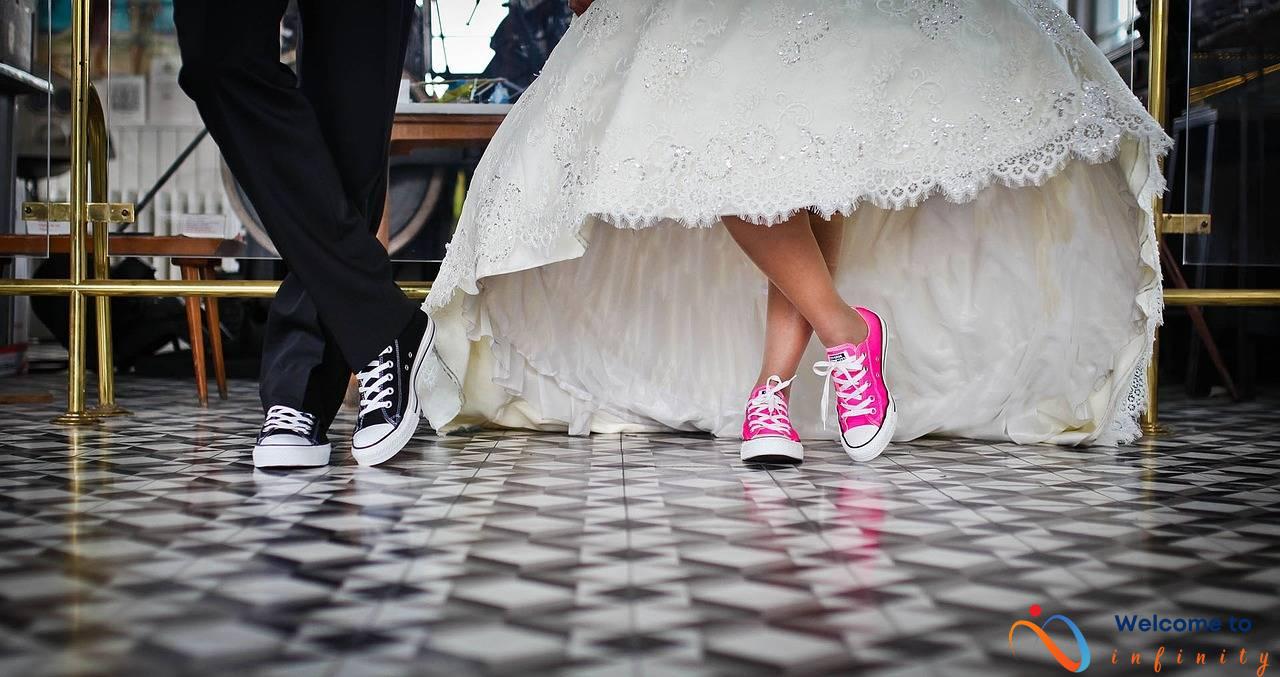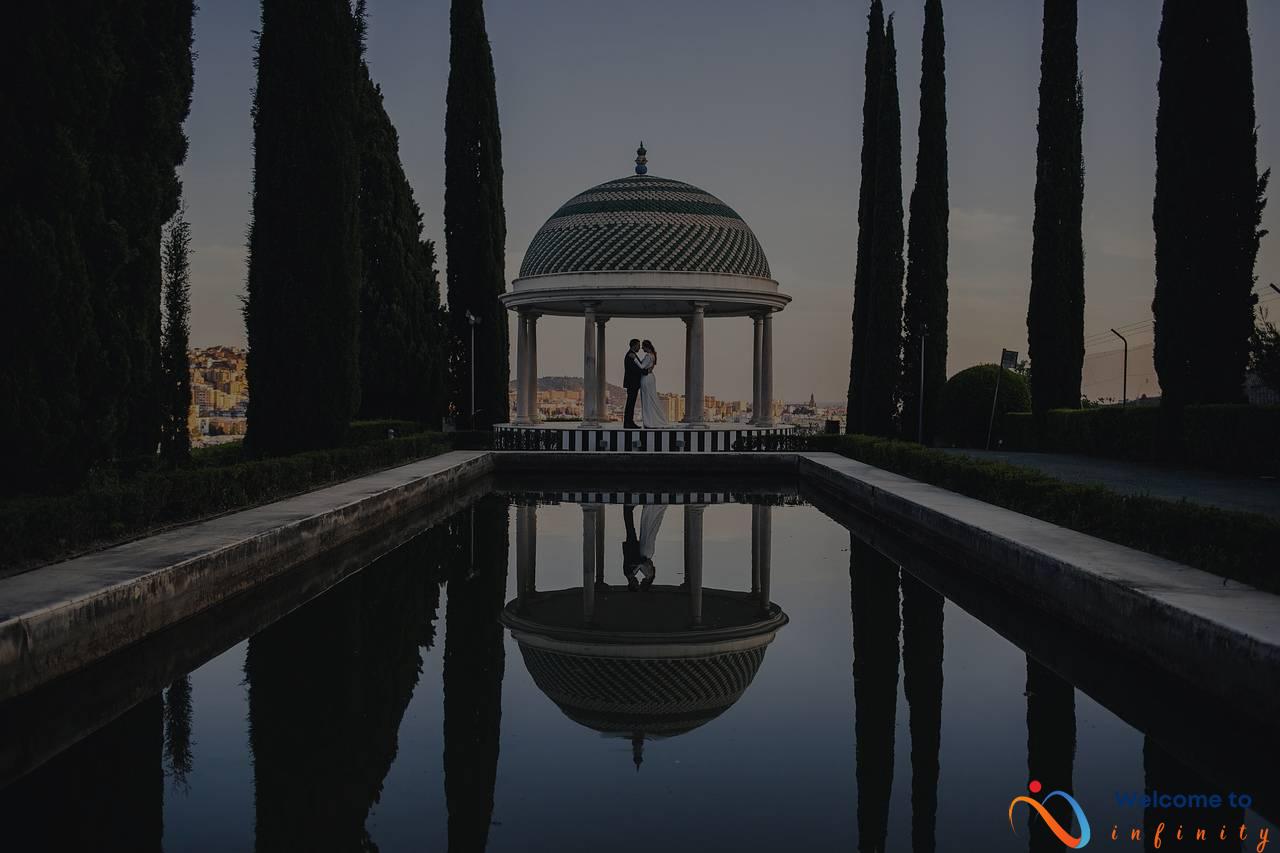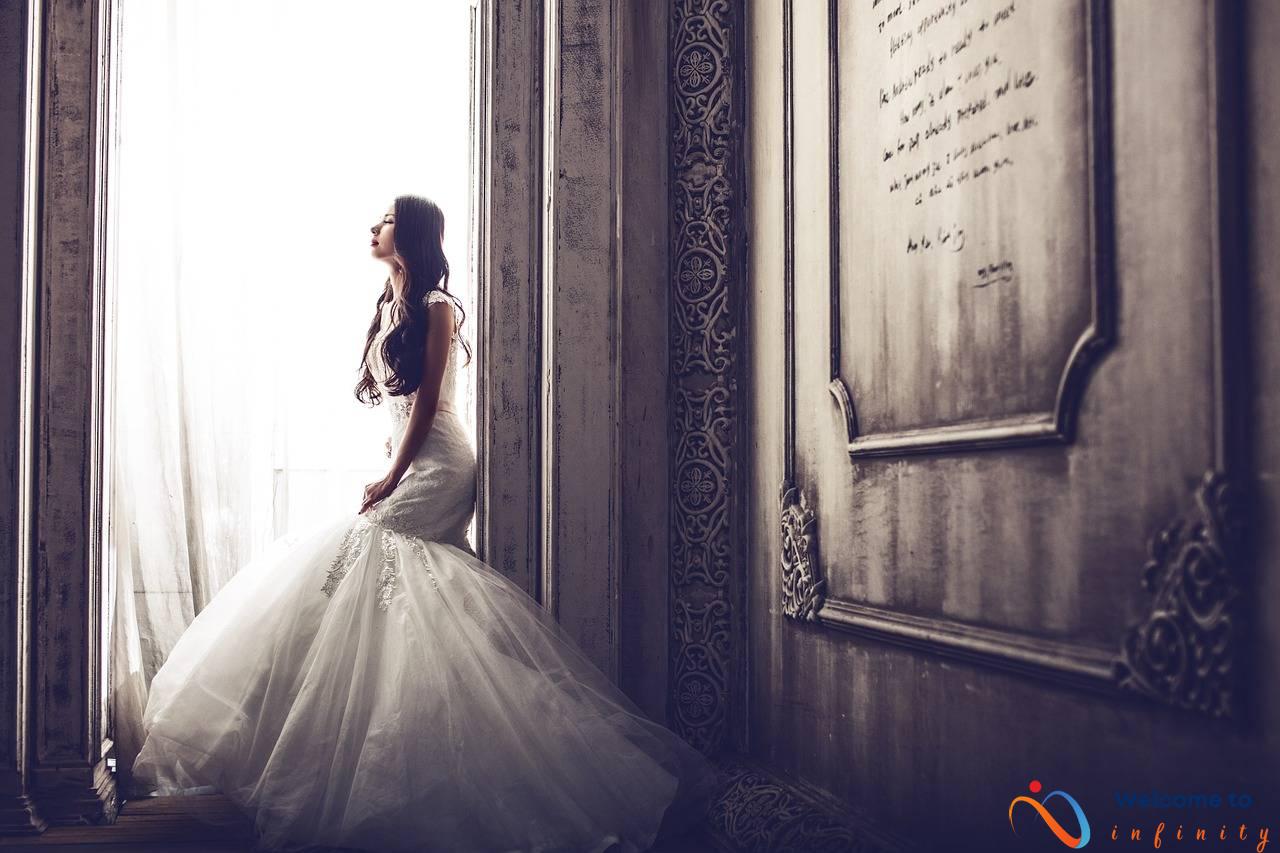A wedding bouquet is one of the most important accessories for the bride on her special day. It is an essential accessory that can elevate the entire bridal look. However, creating the perfect wedding bouquet can be overwhelming and confusing. Here are ten tips to help you create a beautiful wedding bouquet that complements the bride's dress and the wedding theme.
One of the most essential tips for creating a beautiful wedding bouquet is choosing the right flowers. Some of the most popular wedding flowers include roses, hydrangeas, peonies, and lilies. When selecting blooms, consider the color, shape, and scent that best complement the overall wedding theme.
The bridal bouquet should complement the wedding's style and theme. Consider whether the wedding will be formal or casual, and choose a bouquet style that best suits the occasion.
Don't limit yourself to traditional round bouquets. Explore unique bouquet shapes, such as cascading or hand-tied bouquet styles, to create a stunning effect.
Incorporate different textures when selecting flowers for your bouquet. Mix smooth and rough petals, or add greenery and filler flowers to create an interesting and visually appealing bouquet.
Arranging an odd number of flowers is an excellent way to create a more visually appealing bouquet. Use a combination of blooms and greenery to create a bouquet with an odd number of flowers.
Less is more when creating a wedding bouquet. Opt for a simpler bouquet that complements the wedding dress instead of overpowering it.
Choosing flowers that are in season ensures that they are fresh and within budget. Do some research to see what flowers are in season during the time of your wedding to create the perfect bouquet.
The wrapping of the bouquet can make or break the overall look. Use ribbon or fabric that complements the dress and secure it tightly for a professional look.
Creating a mock bouquet before the big day is an excellent way to nail down the perfect arrangement. Practice makes perfect, and this is the perfect opportunity to experiment with different bouquet styles and flower combinations.
If you're feeling overwhelmed, don't hesitate to hire a professional florist to create the perfect wedding bouquet. They have the experience and expertise to create a breathtaking and stunning bouquet that complements the bride's dress and the overall wedding theme.
Choose the Right Flowers
Choosing the right flowers for your wedding bouquet is crucial in creating an unforgettable look. Roses are a popular choice due to their classic beauty and variety of colors. Hydrangeas are also a favorite for their fullness and delicate appearance. Peonies, with their soft and romantic petals, are another top pick. Lilies add elegance and sophistication to any bouquet.
When making your selection, consider not only the color of the blooms but also their shape and size. You want your flowers to complement the bride's dress and the wedding's theme. Think about the scent of the flowers as well, as some blooms may have a stronger fragrance than others.
Creating a beautiful bouquet is about finding the perfect balance of colors, shapes, and textures. You can mix and match different flowers to achieve a unique and personalized look. Don't be afraid to experiment with different combinations until you find the perfect bouquet that truly reflects your style and personality.
- Roses
- Hydrangeas
- Peonies
- Lilies
Selecting the right flowers is certainly an important part of creating a beautiful wedding bouquet. With a little creativity and some thoughtful planning, you can create a stunning bouquet that will be a memorable part of your special day.
Consider the Style
Choosing the right bouquet style is essential for creating a cohesive wedding look. Consider the wedding's overall style and theme when selecting the bouquet design. If the wedding is formal, a classic round bouquet or cascading bouquet may be more appropriate. Conversely, a casual wedding may call for a more relaxed and bohemian-inspired bouquet.
When considering the style, it's also essential to factor in the bride's dress. The bouquet should complement the dress rather than compete with it. For example, if the bride is wearing a simple, elegant gown, a small and understated bouquet would be the perfect complement. If the dress is intricate and detailed, a more extravagant bouquet may be needed to balance out the overall look.
It's also important to consider the color palette of the wedding when selecting the bouquet style. A bright and bold bouquet may clash with a muted and neutral color palette. Alternatively, a small and delicate bouquet may get lost amidst bright and bold wedding colors.
- Consider the wedding's overall style and theme when selecting the bouquet design.
- Factor in the bride's dress to ensure the bouquet complements rather than competes with it.
- Take the color palette into account to ensure the bouquet doesn't clash with other wedding colors.
By keeping these factors in mind, the bride can select the perfect bouquet style that complements both her dress and the overall wedding look.
Get Creative with Shapes
When it comes to wedding bouquets, round-shaped arrangements may be the most traditional choice, but that doesn't mean you have to stick to the norm. Get creative with different shapes for a unique and unforgettable bridal bouquet.
Cascading bouquets are a popular choice for brides who want a dramatic and romantic look. These bouquets feature a long trail of flowers that cascade downward, creating a waterfall effect. This style typically works best with loose, flowing flowers and greenery, such as orchids and ferns.
On the other hand, a hand-tied bouquet is a more organic and casual approach. These arrangements are tied with a ribbon or twine, and the stems are left exposed for a natural look. Hand-tied bouquets can include any variety of flowers, but they look especially charming with wildflowers or garden roses. This style is perfect for rustic or bohemian weddings.
If you're looking for a more modern shape, consider a geometric bouquet. These bouquets feature clean lines and shapes, such as a triangle or crescent. A mix of bold blooms, like protea or anthurium, can create a striking effect in this style.
When deciding on a shape, think about what suits your personality and wedding style. Don't be afraid to experiment with unconventional shapes and unique combinations of flowers. Your wedding bouquet is a reflection of you and your love story, so make it one of a kind.
Think About Texture
When creating a beautiful wedding bouquet, texture is just as important as color and shape. One way to incorporate texture is by mixing smooth and rough petals within the bouquet. For instance, pair delicate roses with the more texturized ranunculus or dahlias. Additionally, adding greenery to the bridal bouquet can create interest and depth. Consider using eucalyptus, ferns, or ivy to create a lush, organic look.
Filler flowers are also a great way to add texture to the bouquet. Tiny and delicate flowers, such as baby's breath or wax flowers, can be used to complement larger blooms. They can also be used to create airy, ethereal effects. Don't be afraid to mix and match different types of filler flowers to create the perfect bouquet.
A great way to add texture is by playing with the shapes of flowers. Incorporating flowers with unique shapes, such as proteas or anemones, can create a more texturized look. Using flowers with velvety petals, like peonies or ranunculus, can add a different feel to the bouquet. By combining smooth and rough petals, as well as different types of greenery and fillers, brides can create a stunning, multi-dimensional arrangement.
- Pair smooth and rough petals for added texture
- Add greenery for depth and interest
- Use filler flowers to complement the bouquet
- Experiment with unique flower shapes
Use an Odd Number of Flowers
When it comes to creating a visually appealing wedding bouquet, using an odd number of flowers can make all the difference. Aranging an odd number, such as three or five, creates a more natural and balanced look. The eye is drawn to the center flower, creating a focal point for the bouquet.
However, this doesn't mean you should use any random odd number. It's important to consider the size of the flowers and the overall size of the bouquet. For example, if you're using larger flowers, such as hydrangeas, three may be enough to create a visually pleasing look.
Arranging an odd number of flowers can also help create depth and dimension in the bouquet. By mixing different sizes and textures, you can create a more interesting arrangement. For example, using three roses and two sprigs of baby's breath can create a beautiful and balanced bouquet.
It's worth noting that odd numbers aren't just limited to flowers. You can also incorporate an odd number of filler flowers or greenery to add more depth and texture to the bouquet.
Overall, using an odd number of flowers is a simple and effective way to elevate the look of a wedding bouquet. It helps create balance, depth, and a natural feel that can complement any wedding theme.
Don't Overdo It
When it comes to wedding bouquets, it's important to remember that less is often more. The bouquet should be simple and complement the wedding dress instead of overpowering it. Choose a few key flowers that match the overall aesthetic of the wedding.
Consider using a single type of flower, like roses or peonies, for a classic look. Or, opt for a smaller bouquet of more unique blooms, like anemones or ranunculus. Don't feel like you need to fill every inch of the bouquet with flowers – negative space can be just as effective in creating a beautiful arrangement.
To keep the bouquet from being too overwhelming, avoid using overly vibrant or gaudy colors. Stick to more muted tones, like whites, creams, and pastels, that complement the bride's dress. Greenery can also be used instead of flowers to create a more understated look.
Remember, the bouquet should enhance the bride's appearance, not detract from it. Keep it simple, elegant, and in line with the overall wedding aesthetic. By following these tips, you can create a stunning wedding bouquet that will be remembered for years to come.
Consider the Season
Choosing the right flowers for a wedding bouquet is critical, but it's equally important to consider the season. Opting for flowers that are in season will not only ensure their freshness but will also help you stay within budget. For example, if you're having a summer wedding, consider incorporating sunflowers, daisies, or dahlias into the bouquet. Other popular summer flowers include lavender, peonies, and roses. If you're getting married in the fall, consider using chrysanthemums, asters, or dahlias to complement the season's colors.
To ensure you're choosing flowers which are in-season, consult with a professional florist or check regional bloom charts. Not only will this make sure that the flowers in your bouquet are vibrant, but it will also ensure that they are readily available, making it easier to stay on budget. This will not only make your bouquet stand out but ensure that it perfectly complements the wedding's theme and style.
- Research which flowers are seasonal for your wedding date
- Speak to a professional florist for their recommendations
- Consider where you're located and what flowers grow locally
When you choose seasonal flowers, you can be sure of their quality and availability. With the right combination of blooms, you'll create a beautiful wedding bouquet that will add the perfect touch to your special day.
Wrap the Bouquet Properly
One of the most overlooked aspects of creating beautiful wedding bouquets is wrapping them properly. However, it's important to pay attention to the wrapping because it can make or break the overall look of the bouquet. Here are a few tips to help you wrap your bouquet properly:
- Choose the Right Ribbon or Fabric: Choose ribbon or fabric that complements the dress and the flowers. The ribbon or fabric should match the color and style of the bouquet.
- Secure it Tightly: Make sure that the ribbon or fabric is securely tied around the stems of the flowers to prevent them from falling out or shifting during the ceremony.
- Consider the Length: The length of the ribbon or fabric should depend on the size of the bouquet. If the bouquet is large, you may need a longer ribbon or fabric to wrap it properly.
- Add Embellishments: If you want to add a bit of extra flair to the bouquet, consider adding embellishments, such as beads, pearls, or charms, to the ribbon or fabric.
Overall, wrapping a wedding bouquet may seem like a small detail, but it's a crucial one that can make a big difference in the overall look of the bride's ensemble. By following these tips, you can ensure that your bouquet is wrapped properly and looks beautiful on your big day.
Practice Makes Perfect
The old adage “practice makes perfect” is especially true when it comes to creating the perfect wedding bouquet. To ensure that you have the ideal arrangement for your big day, it's a good idea to create a mock bouquet beforehand. This will give you the chance to experiment with different flowers, shapes and textures, and to adjust your design until it's just right.
Before you start, gather all of your supplies and set aside a couple of hours to focus on creating your mock bouquet. Use the same flowers and wrapping materials that you plan to use on your actual wedding day so that you can get an accurate sense of what the final product will look like.
Start by experimenting with different flower combinations and arrangements. Try arranging the flowers by color, shape, and texture to see what looks best. Don't be afraid to take risks – after all, this is just a practice run, so there's no harm in trying something new.
Once you've settled on a design, practice wrapping the bouquet properly. Pay attention to the wrapping materials, making sure that they complement both your flowers and your wedding dress. When you're finished, set the bouquet aside and take a picture of it from different angles. This will help you to see how it will look in photos on your wedding day.
If you're really struggling, consider enlisting the help of a friend or family member who has experience with flower arranging. Alternatively, you could attend a flower arranging class or consult with a professional florist for guidance.
Ultimately, the key to creating a beautiful wedding bouquet is to experiment, practice, and fine-tune your design until it's absolutely perfect. By taking the time to create a mock bouquet, you'll be able to relax and enjoy your wedding day, knowing that your flowers are exactly what you envisioned.
Consider a Professional Florist
If you are feeling overwhelmed or unsure about creating a bouquet for your wedding, consider hiring a professional florist. Professional florists have years of experience and can help you create a beautiful wedding bouquet that perfectly complements your dress and the theme of your wedding. Hiring a florist also means you won't have to stress about arranging the flowers yourself.
Before hiring a florist, do your research and find one with an excellent reputation and a portfolio of stunning wedding bouquets. Schedule a consultation to discuss your vision and preferences in detail, and don't be afraid to ask questions about their experience, pricing, and availability. A professional florist can offer valuable advice on flower-selection, seasonality, and the bouquet's shape and style.
While hiring a professional florist is an additional expense, keep in mind that they have access to more options and can secure premium blooms. It's also a worthwhile investment if you want a flawless bouquet that is stress-free and takes the burden off of your shoulders.
Ultimately, choosing to hire a professional florist is a personal choice. Keep in mind that it's your special day, and you deserve to feel confident and at ease with every decision you make.












